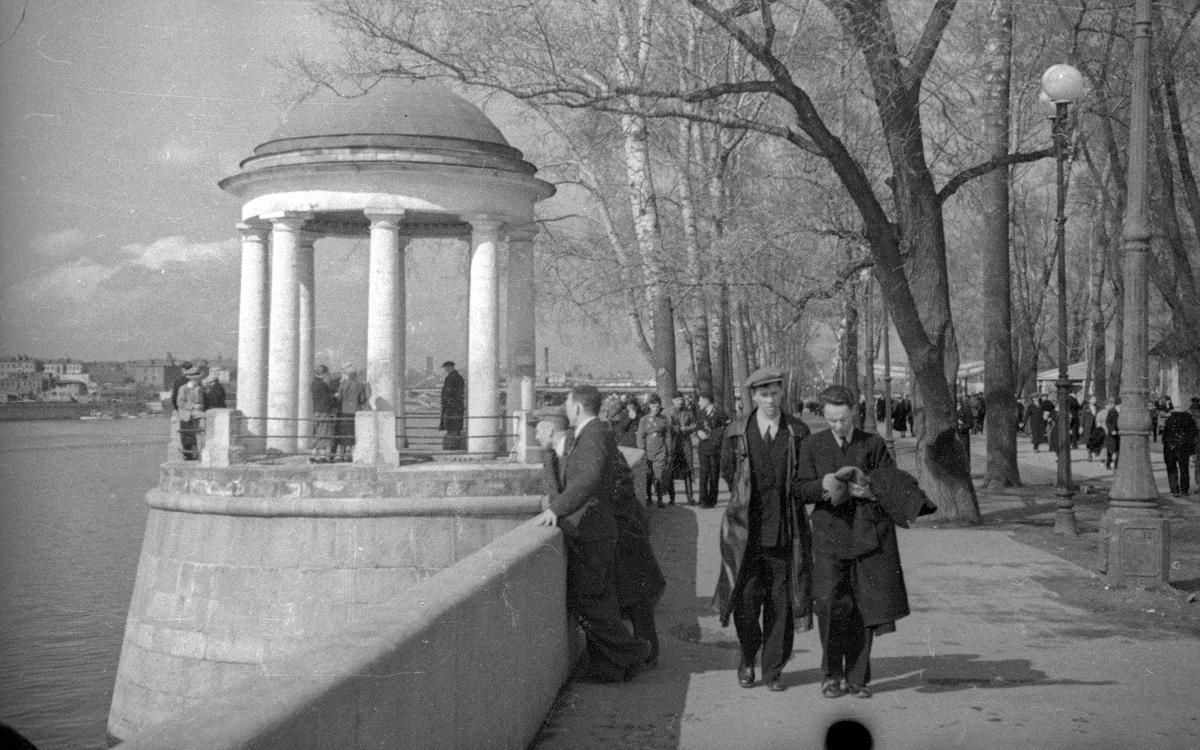
The Gorky Park Chess Fraternity
In the summer of 1935, Vasily Smyslov took part in his first chess tournament. Until that moment the future World champion played only at home, mostly against his father. Smyslov's main goal was to measure up against the ranked chess players and to move up the ladder of the Soviet chess qualification system.
Luckily, Smyslov lived next to one of the main hubs of chess activity in Moscow – there was a chess club at Gorky Park, right across the river from Smyslov's home.
The park, officially known as the Central Park of Culture and Leisure named after Maxim Gorky, opened its doors to the public in 1928. It served many functions – not only recreation but also entertainment and even cultural development and propaganda of the achievements of the Soviet Union.
Gorky Park quickly became a go-to place for thousands of Muscovites during the summer months. It offered diverse recreations, from chess and checkers to quizzes, sing-alongs, brass orchestra, singing performances and public lectures. Most importantly, it was all either free or very cheap – an important consideration in a poor country that offered few entertainment options.
I found an interesting video, which was created to celebrate the 90th anniversary of Gorky Park and provides a glimpse of its history through old photos with Russian subtitles:
One of the most popular spots in Gorky Park was its chess pavilion. Yury Golubovsky, an amateur player who was a regular visitor in 1930s, described the importance of this club for the Moscow chess scene at the time (Shakhmaty v SSSR, #11/1979):
During the summer months of the pre-war years (1934-40), the chess center of the capital was, undoubtedly, the club in the Central Park of Culture and Leisure named after Gorky, which was led by the well-known chess organizer G. Podolny. Qualification tournaments, simultaneous exhibitions, blitz tournaments – all of this drew chess fans into this cozy corner of the park. Among the constant visitors of the club there was a big group of schoolchildren who spent days and nights in the pavilion. Y. Averbakh, V. Simagin, B. Vaksberg, G. Dzagurov, M. Krolyunitsky, I. Kachurin, A. Prorvich, I. Felitsyn, A. Usov – though this is far from a complete list of the young chess enthusiasts who learned from each other. Analysis of the games, discussion of opening variations, endless blitz tournaments...
It is amazing how many of the players that visited Gorky Park in 1930s went on to achieve great things in chess. Vasily Smyslov became the World Champion, Yuri Averbakh and Vladimir Simagin grew into grandmasters, Alexander Prorvich, Mikhail Beilin and Mikhail Bonch-Osmolovsky became national masters. This list could have been much longer, if not for the fact that the Second World War cut so many lives short...

But let us return to Yury Golubovsky's memory of Smyslov's first tournaments at Gorky Park:
In the summer of 1935, a 14-year-old boy showed up in the chess pavilion of Gorky Park and signed up for the qualification tournament. Tall, somewhat slouchy, taciturn, dressed very modestly but tidy, almost always in a white shirt with a turn-down collar. That was Vasily Smyslov. He was often accompanied by his father Vasily Osipovich, an engineer at the Moscow automobile factory. Elderly, gray-haired, in pince-nez, always dressed in a gray tolstovka, he always radiated special warmth and goodwill. And of course, he always rejoiced at Vasya’s successes, which were many – the future world champion marched through all tournaments with almost 100% score, achieving the second category in a single summer.
The last sentence is a slight exaggeration – during that summer Smyslov only made it from an unranked player to a third category (the categories went from fourth to first at the time, with the first awarded only to the few strongest players in the country). However, it was a significant achievement all the same.
The group of the boys that met in 1935 in Gorky Park played a big role in Smyslov’s life. The most special of them was Georgy (or Bazya) Dzagurov, who would become one of Smyslov’s closest friends and mentors in the pre-war years. Dzagurov was four years older than Smyslov, and in several cases Smyslov would follow the lead of his “elder comrade.”
Dzagurov was a bit of a local celebrity by the time he met Smyslov. He was a strong player in his own right, with acute tactical vision and a few victories over grandmasters in simultaneous exhibitions under his belt. During the 1935 international tournament in Moscow Dzagurov managed to defeat Emanuel Lasker and Andre Lilienthal!

I would like to illustrate Dzagurov's attacking style with a game that was played at Gorky Park a year later and published in 64 newspaper with the annotations by Viktor Baturinsky:
Dzagurov was not only a player, but also an informal leader of the Gorky Park chess section. He organized countless simuls, chess lectures and blitz tournaments. His personal notebooks are filled with dozens of tournament tables from these days. Dzagurov would often finish at the top, even when surrounded by the players that formally outranked him. The table below is case in point – Dzagurov won the tournament a full point ahead of the 1st category player Boris Persitz, and 1.5 points ahead of Smyslov and Prorvich!

When the summer of 1935 was over, Smyslov followed the example of his older friend and joined Dzagurov at the chess section at the Leninsky House of Pioneers. A few months later, in the championship of the House of Pioneers Smyslov played one of his most famous games, known as Smyslov's Immortal. This game appeared in the chess newspaper 64, marking the first of the many publications about the future World Champion.